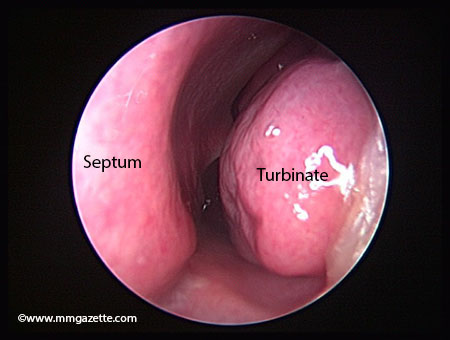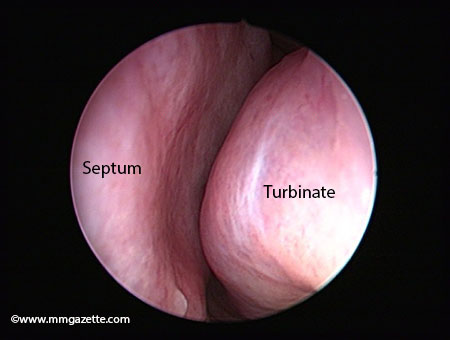What is the difference between these 2 terms?
Plenty of times patients will asked me this, “Doctor, do I have sinus?”. Any medical practitioner will be tempted to say “Yes”, to any living person- whether healthy or not. I will describe this in a little while.
Most Malay speaking patients frequently come out with this question as well, “Doctor, am I suffering from ‘resdung’?”. It was utmost alarming when I went through the internet to look for the term ‘resdung’. The top search on the definition was not only wrong, but was very misleading, as it was provided by non-medical background personnel. Their main aim is to sell their own health products, mainly unregistered. Also to note, this is the reason for creation of the Malaysian Medical Gazette (MMG) website- to provide accurate information to the public by health professionals.
Sinus by definition is a hollow, cavity, channel or space such as venous sinus or paranasal sinus. Meanwhile, paranasal sinus is translated as mucosa lined air cavities in the cranial bones which communicate with the nasal cavity, including the ethmoidal, frontal, maxillary and sphenoid sinuses. Therefore, it is rather inaccurate for someone to say “I am suffering from sinus” when they are actually describing a normal anatomy which everyone has! As mentioned before, most doctors will silently answer “Yes, everyone has sinus” because every normal people has sinuses in their nose.
‘Resdung’ on the other hand, is a very common Malay term described by ‘Kamus Dewan’ (a Malay dictionary) as a disease of the nose caused by inflammation of the sinus membranes. There is nothing wrong with the translation, but in medical terms, it is rather too generalized. Most diseases of the nose will have this condition.
I would like to introduce 2 common nose conditions which are associated with these 2 terms.

Image 1 normal turbinate

Image 2 allergic nasal endoscopy
Allergic rhinitis
Characterized by having nasal blockage, clear watery runny nose or rhinorrhea, sneezing and itchiness of the nose and sometimes the eyes. The condition is sometimes triggered by dust, food or weather changes. There is usually family history of similar disease and also asthma or eczema. It is a clinical diagnosis; therefore, there is no need of any blood test, X-rays or scans to diagnose the problem.
The ENT doctor may do an endoscopic examination to rule out any growth in the nose. The video attached shows a normal nasal endoscopy done in the clinic. The common doctors who are not familiar with this appearance may wrongly diagnose this as a growth in the nose and cause unnecessary anxiety to most patients (Image 1). An allergic rhinitis patient will usually have enlarged turbinates, which normally function to humidify the nose, among many (Image 2). Treatment consists of antihistamine in mild cases and an addition of steroid nasal spray in more severe cases.
Sinusitis
In this condition, a person will experience nasal discharge which either be yellowish, greenish or blood stained. The main feature will be a horrifying headache, either at the forehead or facial pain at the mid nose or cheek; and on either one side or both sides may be affected. Nasal blockage may occur; and fever may be present as well. The course of disease may be a single severe episode over few days, or episodes lasting over few weeks.
The ENT doctor will do proper examination, including nasal endoscopy examination which may show pus draining from the opening of the sinuses. The doctor may order a CT scan if there is complication of the disease; such as extension into the eye or brain, or if there is a plan for surgery. Treatment is usually with analgesia, irrigation of nasal cavity by patients themselves with appropriate solution and antibiotic in bacterial cases. Chronic cases will require steroid nasal spray to reduce the inflammation.
In most ENT clinics, allergic rhinitis is way more common than sinusitis. In fact, the main bulk of ENT clinics workload is allergic rhinitis, especially in urban areas.
Therefore, is it a sinus or ‘resdung’?
In my practice, if a person says he has ‘sinus’– he may either refer to allergic rhinitis or sinusitis. Most people still cannot differentiate these 2 common conditions.
Also, most will come saying they have ‘resdung’– they may also refer to allergic rhinitis or sinusitis.
In conclusion, it does not matter what terms or words people describe their symptoms or diseases, we need to look into the history and examination of the person to come to a correct diagnosis and treatment.
I do not foresee a change in the trend in terms of sinus or ‘resdung’. I only wish people with these conditions will turn up to qualified doctors, instead of believing in uncertified claims over the internet or social media, in using unorthodox and rather dangerous methods for eliminating nose diseases.
(Acknowledgement: I would like to thank the patients, parents and staffs again for allowing the use of their pictures for the benefit of public health education)
Dr Ahmad Nordin is an Ear Nose and Throat surgeon currently working in Sabah. Find out more about him on The Team page. This article is also available in Malay here https://www.mmgazette.com/sinus-atau-resdung-dr-ahmad-nordin/
References:
- Dorland’s Illustrated Medical Dictionary 32nd
- Dewan Bahasa & Pustaka Kamus Dewan. Available at this website: http://prpm.dbp.gov.my/Search.aspx?k=resdung accessed on 29 November 2013.
- PL Dhingra. Diseases of the Ear, Nose and Throat 4th
[This article belongs to The Malaysian Medical Gazette. Any republication (online or offline) without written permission from The Malaysian Medical Gazette is prohibited.]

Thank you doctor.
Your explanation is crystal clear!
You are welcome Jay Jay.
Glad to know people like you are reading it & understood it. Thanks for supporting our efforts!